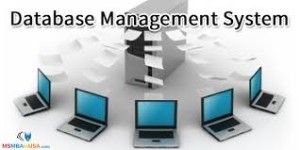 131. Describe the difference between data and database administration.
131. Describe the difference between data and database administration.
Data administration is responsible for the overall management of data resources. Some of the core roles include the creation of data polices, procedures and standards, resolve data ownership issues, and manage the information repository. Database administration is physical database oversight. Some of the core duties include the selection of the DBMS and software tools, the installation and upgrade of the DBMS, and database performance tuning.
132. What are some of the important security features of a DBMS?
One of the features includes the use of views which allows the presentation of only data needed by someone and limits the capability of database updates. The use of integrity controls includes such things as domains, assertions, and checks. Also authorization rules, user-defined procedures, encryption, authentication schemes, and backups are important.
133. Describe concurrency control.
Concurrency control is the process managing simultaneous operations against a database so that database integrity is not compromised. There are two approaches to concurrency control. The pessimistic approach involves locking and the optimistic approach involves versioning.
134. Explain locking.
Locking is denying others the ability to update a record until someone completes the update or releases the record. Locking can occur on many different levels in a database. It can occur at the database, table, record, or field level. A lock can be shared (another can read the record while an update is in progress) or exclusive (no one can read the record while an update is in progress).
135. Explain issues for database performance.
The installation of the database is an important issue since the better the installation, the better the performance could be. Memory usage is learning how the DBMS uses main memory and then using that knowledge to enable better performance. I/O is usually very intense in a DB, so understanding how users will use the data will help to prepare the database better. CPU usage and application tuning are also important considerations.
136. Describe the difference between homogeneous and heterogeneous distributed database.
A homogenous database is one that uses the same DBMS at each node. Either each node can work independently or a central DBMS may coordinate database activities. A heterogeneous database is one that may have a different DBMS at each node. It may support some or all of the functionality of one logical database. It may support full Distributed DBMS functionality or partial Distributed DBMS functionality.
137. What is a distributed database?
A distributed database is a single logical database that is spread across more than one node or locations that are all connected via some communication link. It requires multiple DBMSs, running at each remote site. A distributed database can be either homogenous (same DBMS at each node) or heterogeneous (different DBMS at some nodes).
138. What is the difference between horizontal and vertical partitioning?
Horizontal partitioning is where some rows of a table are placed into the base relations at one site and other rows are placed at another site. Vertical partitioning is where some columns of a table are placed into the base relations at one site and other columns are placed at another site but each all of these relations must share a common domain.
`139. Explain concurrency transparency.
Concurrency transparency is where each transaction in a distributed database is treated as if it is the only one in the system. Therefore if several transactions are running at one time, the results will be the same as if each transaction was run in serial order. The transaction manager helps to provide concurrency control. The three methods that may be used are locking, versioning, and timestamping.
140. Explain snapshot replication.
Snapshot replication can be used when an application does not require that the data always be current. These applications can be updated by periodic table copying or snapshots. As part of the snapshot effort, all of the data to be included in the snapshot is collected at a primary point. Then a read-only snapshot is taken and the snapshot is sent to each site so that the update can be made.